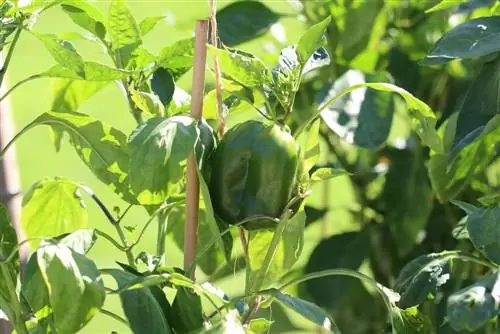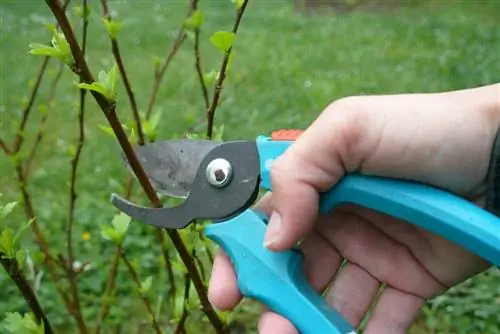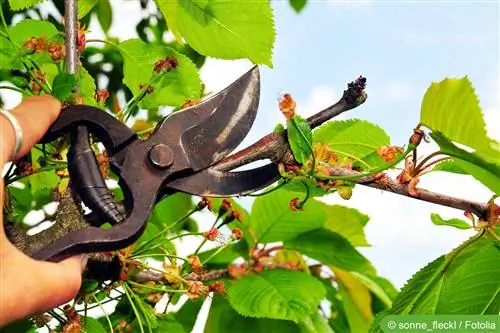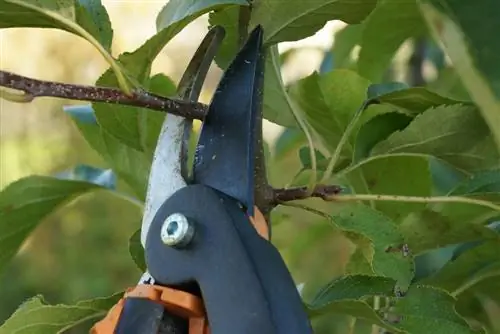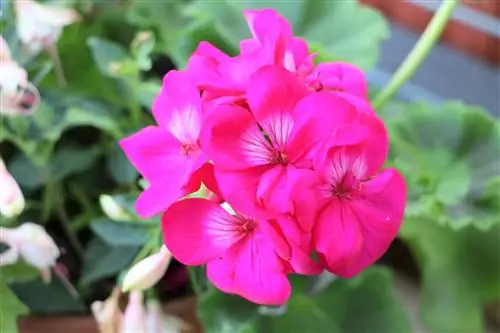- Author admin [email protected].
- Public 2023-12-17 03:39.
- Last modified 2025-01-24 12:45.
Peppers are a popular and versatile fruit with different shapes and colors, from red, yellow and orange, to green or purple. When unripe, all varieties are green, although there are also green varieties. Peppers usually grow as annuals, but can be overwintered. Pruning measures, such as thinning, play an important role in ensuring good yields and successful overwintering.
Does it make sense to make the most of it or not?
Pruning is a completely normal care measure for tomato plants, for example. To this day, there are still differing opinions about the usefulness of maximizing a pepper plant. While some support it, others advise against it. As a rule, the aim is to prevent the excessive formation of green biomass and too many small fruits. To do this, sterile side shoots, so-called stingy shoots, must be removed. However, thinning prevents the plants from growing naturally, which affects their stability.
Tip:
If you are not sure whether to pinch out or not, you can test it by simply letting some plants grow and consistently pinching out others. The better method will then become apparent.
Best time
You usually start pinching out as soon as the first sprouts appear in the leaf axils, i.e. from the young plant stage. The sooner you remove them, the smaller the resulting wounds are, which can be closed more quickly. Thinning out becomes a regular maintenance measure because new branches are constantly being formed. It only ends with the formation of the pods.
Instructions
- Stimulus shoots formed in the leaf axils of the pepper plant
- Between the petiole and the summer shoot
- The smaller they are, the gentler on the plant
- Procedure is similar to that of tomato plants
- To do this, grasp the respective shoot with your thumb and index finger
- Pnip or cut at the base with your fingertips
- Shoot can also be broken out to the side
- Best time of day to stretch out is early in the morning
- If possible in dry weather
Pruning out the shoots means that the plants lose their natural growth habit and grow less bushy. They lose stability, which can be compensated for with appropriate supports to protect them from twisting.
Don't overuse the peppers (chilli plants)
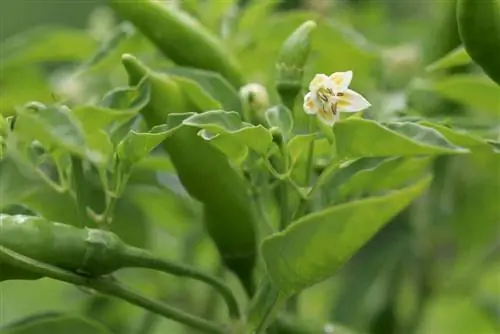
In contrast to chili peppers, the fruits of sweet peppers have more pulp, which in turn needs to be supplied with moisture. Consequently, thinning out can lead to a better harvest. This can be avoided completely with spiced peppers; it could even reduce yields. These plants tend to grow bushy and have the urge to grow taller. Some varieties can easily reach a height of 150 cm even in our latitudes. And the bigger the plant, the more chili peppers it can produce.
Tip:
While sweet peppers are about large, juicy fruits, the main focus of spicy peppers is on the level of spiciness and the quantity of fruits.
Remove Royal Flower
Opinions also differ when it comes to removing the so-called royal blossom. It has a special meaning when pruning peppers. The first flower in the fork between the main shoot and the first side shoot is called the 'royal flower'. Breaking it out is particularly recommended for large-fruited varieties of both sweet and spicy peppers.
But why should you cut the royal blossom at all? The plant transports a large part of its energy reserves towards this flower (peak production), at the expense of the deeper positioned buds. By breaking out or cutting out the reserve substances are distributed more evenly, which is reflected in the formation of additional fruit tendrils and flowers.
Tip:
If you have neglected to remove the royal flower, you can still achieve the desired effect by cutting or breaking out the first fruit while it is still green and unripe.
Leave one or more main shoots standing?
Initially, a single stem grows, so no pruning is necessary. This usually splits after about the tenth leaf. These two main shoots are retained. Now the shoots divide after each new leaf. The first five to six flowers are pinched off as soon as they appear to optimize growth.
The weakest of these side shoots can be cut back after the first leaf in order to obtain a main shoot with corresponding side shoots. All flowers on the side shoots are cut off. Only the flowers in the leaf axils of the two main shoots are allowed to produce fruit. After each harvest, the plant grows back a little faster. If necessary, more fruit can be left on the side shoots of particularly fast-growing plants.
Tip:
Under optimal conditions, two or even three main shoots can easily remain standing. If the location is rather dry, it is advisable to leave only one main shoot so that the existing moisture can be used for fruit formation.
Cutting for wintering

In their natural habitats, peppers usually grow as perennials. Due to their lack of winter hardiness, this is not possible in this country, at least not outdoors. If you want to cultivate pepper plants as biennials, you have to overwinter them accordingly. This in turn is another reason for pruning. However, only if the plant overwinteres in a cool place.
- Cut before wintering
- Best in autumn
- As soon as the temperatures drop to around ten degrees
- It is best to disinfect the cutting tool beforehand
- Then cut back all shoots by half to a maximum of two thirds
- Leave at least two pairs of leaves per shoot
- Cut easily into woody areas
- The more intensive the pruning, the less leaf mass there is
- You need to water less
After pruning, carefully dig up the plant and shorten the ball by about a third. Now all you have to do is put it in an appropriately sized pot and move it to a frost-free winter quarters.

